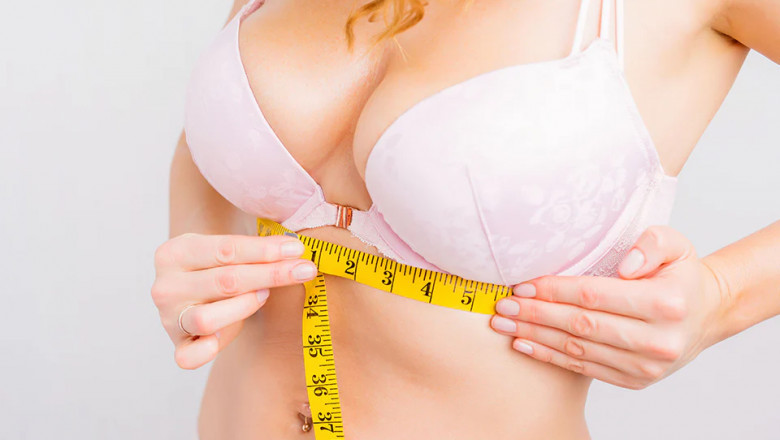views
Understanding Bra Sizing: Band + Cup
A bra size consists of two components:
-
Band Size: The number (e.g., 32, 34) represents your underbust measurement.
-
Cup Size: The letter (e.g., B, C) reflects the difference between your bust and underbust measurements
(Visual suggestion: Infographic showing a tape measure around the torso for band size and across the bust for cup size.)
Step-by-Step Measurement Guide
Tools Needed
-
Soft measuring tape
-
Non-padded bra (or measure braless if self-supporting)
1. Measure Your Band Size
-
Step: Wrap the tape snugly around your ribcage, just below your bust. Ensure it’s parallel to the floor.
-
Calculation: Round to the nearest whole number. If odd, round up.
(Example: 31 inches → 32 band)
(Visual suggestion: Woman measuring underbust with tape, mirror showing proper alignment.)
2. Measure Your Bust Size
-
Step: Measure around the fullest part of your bust while standing upright. For accuracy, lean forward 45 degrees to capture all breast tissue
-
Tip: Keep the tape loose enough to fit one finger underneath.
(Visual suggestion: Side-view diagram of tape placement at nipple level.)
3. Calculate Cup Size
Subtract your band size from your bust measurement. Use the chart below:
| Difference (inches) | US Cup Size | UK Cup Size | |
|---|---|---|---|
| 0–0.5 | AA | AA | |
| 1 | A | A | |
| 2 | B | B | |
| 3 | C | C | |
| 4 | D | D | |
| 5 | DD/E | DD | |
| 6 | DDD/F | E |
(Visual suggestion: Chart comparing differences to cup letters with examples.)
Using a Bra Size Calculator
Online calculators simplify the process by automating measurements. Popular options include:
-
Omni Calculator: Converts measurements into US, UK, or EU sizes
-
A Bra That Fits: Uses six measurements (loose, snug, and tight underbust; standing, leaning, lying bust) for precision
-
BraSizechart.one Fit Finder: Asks lifestyle questions to recommend styles
(Visual suggestion: Screenshot of a calculator interface with input fields for band and bust.)
Sister Sizing: When Your Size Isn’t Available
Sister sizes share the same cup volume but adjust the band and cup proportionally. For example:
-
34C → Sister sizes: 32D (smaller band, larger cup) or 36B (larger band, smaller cup)
(Visual suggestion: Table showing sister sizes for common measurements.)
How to Check Your Bra Fits Perfectly
-
Band: Should sit snugly on the loosest hook, level front-to-back. No riding up!
-
Cups: No spillage or gaps. The center gore must lie flat against your sternum .
-
Straps: Adjust to fit one finger underneath—they shouldn’t dig in or slip.
(Visual suggestion: Side-by-side images of a poorly fitted vs. well-fitted bra highlighting band, cups, and straps.)
When to Re-Measure
-
Weight fluctuations, pregnancy, or hormonal changes.
-
Every 6–12 months for natural body shifts
Final Tips
-
Try Before Buying: Sizes vary by brand. Always test bras in-store or order multiple sizes online.
-
Prioritize Comfort: A bra shouldn’t cause pain, redness, or restrict breathing.
(Visual suggestion: Collage of diverse women confidently wearing well-fitted bras.)






















Comments
0 comment